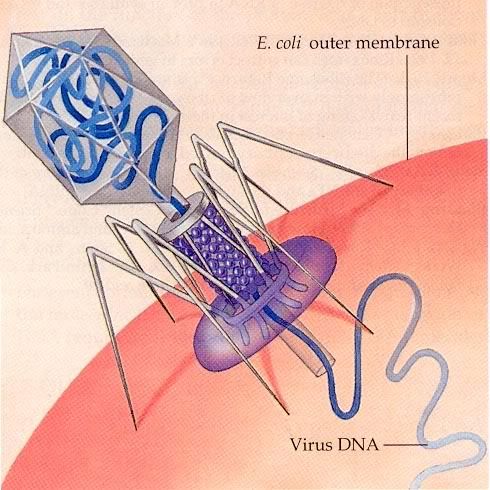It’s been known by scientists and university students alike that a type of virus called a bacteriophage attacks bacteria by drilling through the outer membrane of the bacterium. The virus then runs wild and multiplies until the unfortunate little bacterium explodes in a spectacular cellular fireworks display. But what scientists have never been able to discover is just how they get inside bacteria to begin with – until now.

Petr Leiman, a biophysicist at the École Polytechnique Fédérale de Lausanne in Switzerland who led the team of scientists, and who will publish his findings in Structure said that they had already anticipated that a special kind of protein was making the initial opening. However, the problem was that they couldn’t see the end of the tip to determine what it was.
The team of scientists, at their Swiss base, decided to reverse engineer the tips to try and find out what they were made of. Their test subjects were the bacteriophages P2 and Φ92; for those people who don’t know the book off by heart, they typically attack the e-coli bacteria and the bacteria which cause salmonella. The P2 gene for its bacterium puncturing capabilities was already well-known to scientists, and after some searching the gene for Φ92 was also found.
The proteins in these genes were then grown and isolated, before been turned into crystals. This allowed scientists to use the x-ray crystallography technique to bombard the crystals with x-rays in order to bring up an image of the structure. This went well, but one problem still remained. The end of the structure, the part they were looking for, didn’t show up.
Undeterred, though, the genes were reengineered to only produce the invisible part of the structure. After carrying this out, it was then found that the end of the spike was a single iron atom connected by six amino acids.
Originally, it was thought that bacteriophages had help from elsewhere to puncture the outer membranes of the bacterium, but clearly they don’t need any help at all as they have a super-mini iron spike instead.
But what’s the point of all this? Well, the answer to this is that if scientists can use the viruses to find weaknesses in bacteria then it could lead to a number of new ultra-powerful medicines. However, let’s be honest, even if the scientists do create the medicines, we won’t see any of these new medicines in Britain anytime soon as this country has a history of withholding a number of these new medicines due to the fact that it would cost more money.